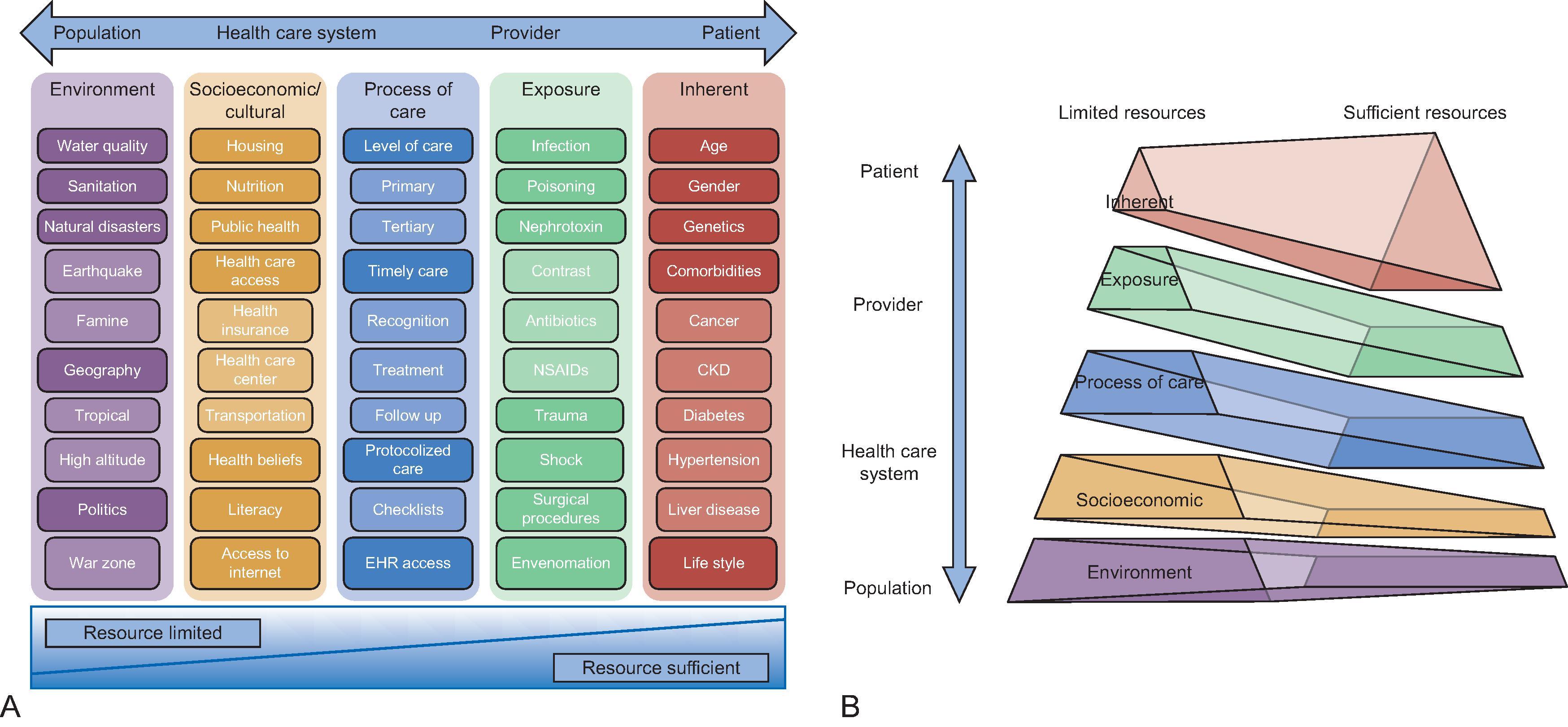Physical Address
304 North Cardinal St.
Dorchester Center, MA 02124
Risk factors for kidney disease span the social determinants of health (poverty, illiteracy, unemployment, pollution, discrimination), infections (HIV/AIDS, tuberculosis, malaria, hepatitis, diarrheal illnesses, pneumonia), and non-communicable diseases (hypertension, diabetes mellitus, cardiovascular disease, chronic liver disease, cancers). It is, therefore, not surprising that as many as 850 million people worldwide may be living with chronic kidney disease (CKD), acute kidney injury (AKI), or kidney failure. Mortality from acute and chronic kidney diseases may reach 5 million per year, in large part due to lack of access to early diagnosis and/or life-saving dialysis and transplantation. Kidney disease is projected to become the world’s fifth leading cause of death by 2040, and, globally, kidney disease is the leading cause of catastrophic health expenditure (out-of-pocket payments for healthcare, which further impoverish the household, defined as 10%-40% of household income). Kidney disease is, therefore, an important public health concern, given the numbers affected, the high mortality, and the consequences that extend beyond individual health.
Prevention of kidney disease is possible through public health strategies, such as reducing infection risk or improving nutrition, and a holistic multi-sectoral approach to tackling the social determinants of disease. Natural disasters, the COVID-19 pandemic, and the social justice movement of 2020 all highlight the significant impact of social and structural factors on kidney disease risk and the worse outcomes in those affected. This chapter discusses the epidemiology of and access to care for kidney disease globally, with an emphasis on challenges faced in lower income settings where structural disadvantage is the norm. Awareness of global inequities is important to support advocacy and action to prevent kidney disease, promote innovations and investigations into causes of kidney disease, improve access to kidney care, and ensure global kidney health.
In 2013, extrapolations from existing data suggested that around 13.3 million people are affected by AKI each year, of whom 1.7 million (12.8%) die. Most (85%) of these deaths likely occur in low- and middle-income countries (LMICs), although rigorous empiric data are missing and likely underestimate the true AKI burden. In LMICs, laboratory testing necessary for diagnosis is not always accessible, and in many settings the diagnosis may be overlooked or underreported. For example, in a survey from China, the diagnosis of AKI was missed in 74.2% of patients, and only 16.7% of AKI cases were identifiable by ICD-10 codes. International efforts to standardize diagnosis and raise awareness may slowly be changing the tide.
The spectrum of AKI varies across the globe and is impacted by factors intrinsic to the individual as well as factors reflecting the social determinants of health ( Fig. 49.1 ). AKI is predominantly hospital-acquired in higher-income countries (HICs), where it is associated with multi-morbidity, aging, surgery, cardiac disease, sepsis, and use of nephrotoxic agents. These patients generally have access to the necessary care, including intensive care units and dialysis. In LMICs, community-acquired AKI predominates, women are underrepresented, and adult patients are decades younger with few comorbid conditions. AKI is often associated with volume depletion, sepsis, specific infections (e.g., dengue or malaria), insect/animal bites, pregnancy, and primary kidney diseases. Structural risk factors for AKI that are prevalent in LMICs include poverty, lack of access to clean water, environmental toxin exposure, and natural disasters, often superimposed on inadequate public health measures, poor access to care, and frequent use of traditional remedies. Facilities for diagnosis as well as for intensive care and dialysis care are often limited in LMICs, and access may be further reduced where patients must pay out of pocket. In these settings, the only affordable or accessible means of healthcare may be traditional remedies, some of which may cause or worsen AKI.

Given the aging world population and increasing multi-morbidity as well as improved awareness and access to diagnosis, global rates of AKI are projected to rise. There is a huge variation in the incidence of reported AKI, consistent with incomplete data collection; estimates of AKI among hospitalized adults and children worldwide range from 0.7% in Northern Africa to 31% in South America. Overall, the global, pooled incidences of AKI were 22% (95% CI 19–24) in adults and 14% (95% CI 9 – 21) in children, suggesting that around one in five adults and one in seven children hospitalized worldwide experience some degree of AKI during admission. A patient group not often captured in the global AKI discourse is preterm neonates, for whom the risk of AKI ranges from 16% to 70%, depending on comorbidities. Globally, around one in 10 infants is born preterm and, therefore, vulnerable to developing AKI. Awareness of neonatal AKI risk in LMICs is poor, and the contribution of AKI to perinatal mortality in preterm infants is not known.
Among adults and children admitted to hospitals with AKI, pooled mortality was 24% and 14%, respectively. However, risk of death is significantly associated with severity of AKI (AKI stage), degree of illness (requirement for intensive care), population factors, and access to dialysis. Late presentation and patient inability to pay are important contributors to AKI deaths in LMICs.
Become a Clinical Tree membership for Full access and enjoy Unlimited articles
If you are a member. Log in here